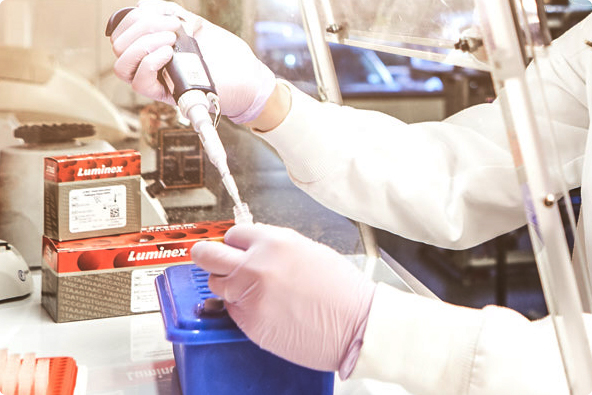A more comprehensive view sheds light on the biological response to muscle injury

Scientists at the University of North Texas have established a novel method for measuring a broad range of RNA and protein biomarkers. In their study, they employed bead-based multiplex detection to assess the effects of skeletal muscle injury over time, but the same concept could be useful for many clinical applications.
The team—led by Melody Gary—published their results in an April 2019 issue of Methods.
Multiplex methods can do more with less
For this project, they used a multiplex assay based on xMAP® Technology to assess the injury response. “A current weakness of research…is the failure to include a large enough pool of biomarkers from a variety of types (i.e., lncRNA, mRNA, and protein),” the scientists note. “Our laboratory proposes to address known limitations by employing multiplex assay design to reduce sample volume, increase throughput, and reduce experimental cost compared to running singleplex assays.”
In this study, subjects ran a half-marathon and blood samples were drawn 4 and 24 hours after the event. Thanks to multiplex technology, the team was able to quantify 90 different targets, including “mRNA, lncRNA, cytokines, soluble cytokine receptors, and myokines.” One of the goals of this work was to distinguish biomarkers representative of the initial response, a delayed response, and a prolonged response—that is, biomarkers seen at both the 4-hour and the 24-hour marks.
The project provided results on injury responders, including many mRNAs, lncRNAs, cytokines, and myokines that had elevated levels in the short-term or longer-term following injury, or were consistently elevated at both readings. “These findings demonstrate the interplay between RNA and protein biomarkers in response to skeletal muscle injury,” the researchers write. “The roles of lncRNA in skeletal muscle-related injury are still emerging, but based on our observations, it is reasonable to speculate that they have effects beyond the regulation of NF-kB signaling.”
“This novel, experimental application of bead-based multiplexing is applicable to a variety of clinical models that involve muscle injury and/or wasting,” the authors conclude. “The end-goal of this approach would be to test new nutritional and pharmaceutical targets for treating muscle injury and associated inflammation.”
Resources
- Advances in Bead-Based Biomarker Detection [Methods xMAP® Issue]
- Five Things We Learned from an xMAP® Power User [Blog]
- Getting Started with xMAP® Technology [Video]
- xMAP® Cookbook to Design Your Own Assays [Download]
- Browse 1,200+ Partner Kits with xMAP® Kit Finder [Online Tool]
